 Servers, JSON, & APIs
Servers, JSON, & APIs
Week 6 | Lesson 1.3
LEARNING OBJECTIVES
After this lesson, you will be able to:
- Identify all the HTTP Verbs & their uses.
- Describe APIs and how to make calls and consume API data.
- Access public APIs and get information back.
- Read and write data in JSON format
- Use the
requestslibrary
STUDENT PRE-WORK
Before this lesson, you should already be able to:
- Use a web browser
- Know what a web server is
INSTRUCTOR PREP
Before this lesson, instructors will need to:
- Read in / Review any dataset(s) & starter/solution code
- Generate a brief slide deck
- Prepare any specific materials
- Provide students with additional resources
LESSON GUIDE
| TIMING | TYPE | TOPIC |
|---|---|---|
| 5 min | Opening | Opening |
| 15 min | Introduction | Introduction |
| 15 min | Demo | Demo: HTTP |
| 10 min | Introduction | JSON |
| 10 min | Ind-practice | Independent Practice: Validate JSON |
| 15 min | Guided-practice/ | Guided Practice: Pulling data from API |
| 10 min | Ind-practice | Independent Practice: Python APIs |
| 5 min | Conclusion | Conclusion |
Opening (5 min)
In the previous class we learned about decision trees. In this lesson we will discuss Application Program Interfaces or APIs. An API is a set of routines, protocols, and tools for building software applications that specifies how software components should interact.
In the context of data science, APIs are a very important method to interact with data hosted by third parties -- APIs provide a way to interact with someone else's database.
Introduction (15 min)
In order to talk about APIs, we need first to introduce the concept of separation of concerns. In computer science, separation of concerns (SoC) is a design principle for separating a computer program into distinct sections, such that each section addresses a separate concern. For example, when building a web application, the best practice is to separate the website logic from data models. This not only allows for cleaner code, but is an easier way to manipulate our layouts and interactions without having to alter how the models work. Separation of concerns becomes ever more important when working with outside data.
API calls are really a fancy term for making HTTP requests to a server and sending/receiving structured data from that endpoint. We are still communicating with URLs, however instead of receiving markup, like we do with HTML pages, we receive data, in a variety of forms -- JSON, XML, CSV, and others.
Representational state transfer (REST) is the most common architecture style for passing information to and from these API endpoints.
Before we start consuming these services however, it's important to understand the fundamentals of the underlying communication layer: HTTP.
HTTP: Recap
HTTP is a protocol - a system of rules - that determines how web pages (see:'hypertext') get sent (see:'transferred') from one place to another. Among other things, it defines the format of the messages passed between HTTP clients and HTTP servers.
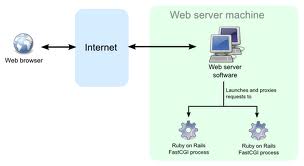
Since the web is a service, it works through a combination of clients which make requests and servers (which receive requests).
HTTP Client
HTTP Clients make or generate HTTP Requests. Some types of clients are:
HTTP Clients respond to HTTP Responses from a Web Server. They process the data being returned from a Web Server.
HTTP/Web Server
All Web Servers receive HTTP Requests and generate HTTP Responses. Often Web Servers are just the middleman, passing HTTP Request and Responses between the client and web application. Two of the most popular HTTP or Web servers are Apache and Nginx, But there are lots different web servers out there.
Web Applications
Web Applications are programs that run on a web server, process the HTTP requests that the server receives, and generate HTTP Responses.
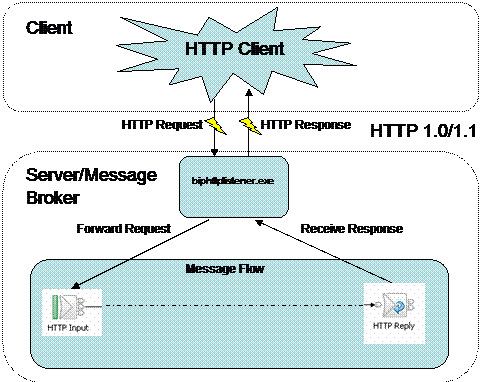
Lost? Here's the play-by-play.
- A client sends a HTTP Request to a HTTP Server running on a remote machine.
- The hostname given in the URL, indicates which server will receive the request.
- The HTTP server processes the HTTP Request. This may entail passing the request to some Web Application, which creates a HTTP Response.
- The response gets sent back to the client.
- The client processes the response.
How does the server know what the request is asking for? This is specified by the URL, a special kind of path that specifies where a resource can be found on the web.

Check: Can anyone explain what a client and a server are?
Demo: HTTP (15 min)
Lets explore HTTP resources. We'll start by looking at HTTP requests and responses using the Chrome Inspector.
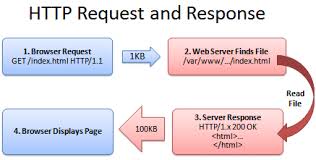
- In Chrome, open up Chrome Inspector (command + option + 'i', or ctrl + click and select 'inspect element').
- Select the Network tab. It should look something like this:
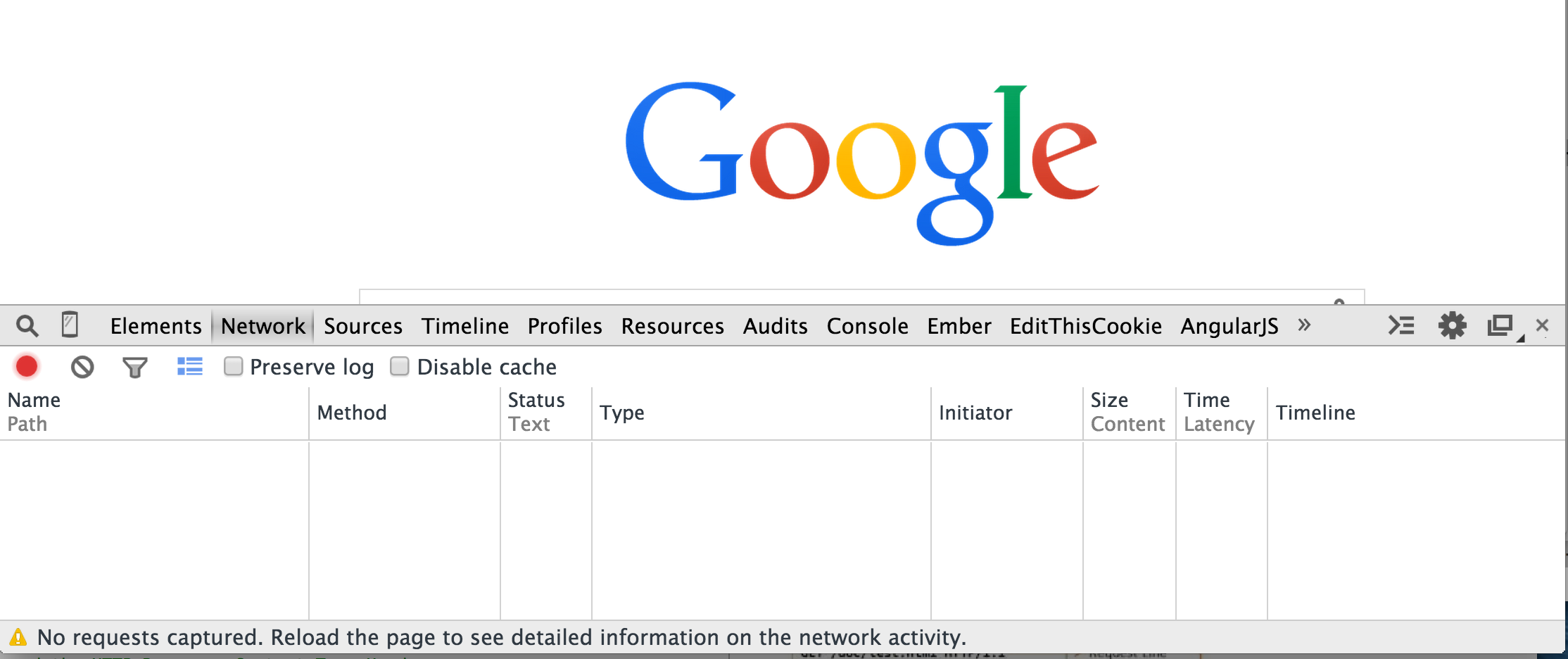
Next, go to the URL https://generalassemb.ly/
You should be able to see a few HTTP Requests and Responses in the Network tab; for each request you'll see a Path, Method, Status, Type, and Size, along with info about how long it took to get each of these resources. Most of this information comes from the HTTP Request and Response.
- Some HTTP requests are for CSS, JavaScript and images that are referenced by the HTML.
- Select
generalassemb.lyin the Path column on the far left. - Select the Headers tab. Headers are meta-data properties of an HTTP request or response, separate from the body of the message.
HTTP Request
The first word in the request line, GET, is the HTTP Request's Method.
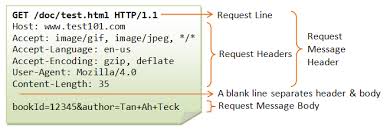
HTTP Request Methods:
- GET => Retrieve a resource.
- POST => Create a resource.
- PATCH (or PUT, but PATCH is recommended) => Update an existing resource.
- DELETE => Delete a resource.
- HEAD => Retrieve the headers for a resource.
Of these, GET and POST are the most widely used.
HTTP Request Structure:
[http request method] [URL] [http version]
[list of headers]
[request body]
Notice, that the Request Header is separated from the Request Body by a new line.
HTTP Request Method Example: (No Body)
GET http://vermonster.com HTTP/1.1
Accept:text/html,application/xhtml+xml,application/xml;q=0.9,image/webp,*/*;q=0.8
Accept-Encoding:gzip,deflate,sdch
Accept-Language:en-US,en;q=0.8
Connection:keep-alive
Host:vermonster.com
User-Agent:Mozilla/5.0 (Macintosh; Intel Mac OS X 10_8_5)
AppleWebKit/537.36 (KHTML, like Gecko) Chrome/32.0.1659.2 Safari/537.36
HTTP Response
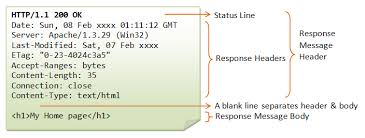
When a client sends a request, the server sends back a response; the standard format for this response is:
[http version] [status] [reason]
[list of headers]
[response body] # typically HTML, JSON, ...
Check: What is a request?
- HTTP version should be 1.1
Instructor note: this could be optional:
Status Codes have standard meanings; here are a few.
Code Reason 200 OK 301 Moved Permanently 302 Moved Temporarily 307 Temporary Redirect 400 Bad Request 403 Forbidden 404 Not Found 500 Internal Server Error
JSON (10 min)
JSON is short for JavaScript Object Notation, and is a way to store information in an organized, easy-to-access manner. In a nutshell, it gives us a human-readable collection of data that we can access in a really logical manner.
JSON is built on two structures:
- A collection of name/value pairs. In various languages, this is realized as an object, record, structure, dictionary, hash table, keyed list, or associative array.
- An ordered list of values. In most languages, this is realized as an array, vector, list, or sequence.
These are universal data structures. Virtually all modern programming languages support them in one form or another. It makes sense that a data format that is interchangeable with programming languages also be based on these structures.
Objects
An object is an unordered set of name/value pairs, like python dictionaries. An object begins with { (left brace) and ends with } (right brace). Each name is followed by : (colon) and the name/value pairs are separated by , (comma).
The syntax is as follows:
{ string : value, .......}
like:
{"count": 1, ...}
Array
Check: What is an array?
As we know, an array is an ordered collection of values. An array starts and ends with
[and]. Between them, a number of values can reside. If there are more than one values reside, they are separated by,.
The syntax is as follows:
[ value, .......]
like:
[1, 2, 3, ...]
Check: what kind of data can go into an array?
We know that data can be stored as a string in double quotes, or a number, or true or false or null, or an object or an array.
Independent Practice: Validate JSON (10 min)
JSON is very simple to use if correctly structured. One of the resources to validate JSON and check if the syntax is correct is JSON Viewer.
For this exercise, copy the JSON data from the starter-code folder and insert it in the web app above, click "Validate".
If you see "Valid JSON", click "Beautify" and you will see a more readable way of JSON. If you do not see the message "Valid JSON", it means that there is a syntax error.
- First, correct errors if there are any
- Then, work in pairs to identify the structure of the JSON:
- What is a root element?
- Are there any arrays?
- How many objects are there?
- What are the attributes of an object?
Instructor note: The provided JSON is purposefully invalid. They will have have to fix the following:
- substitute single quotes with double quotes
- add double quotes where missing around strings
- add commas where missing
Guided Practice: Pulling data from API (15 min)
APIs are methods and data formats to tell people how to "talk" to a system. A couple of examples will clarify:
Example 1: Movies
The internet movie database is a large collection of data about movies. It can be browsed at the address: http://www.imdb.com/.
What if we wanted to programmatically access the data in the database? Unless we are employees of IMDB.com, we probably don't have direct access to their internal database, so we cannot perform SQL queries on their data.
We could use scraping to retrieve data from the web page, and in some cases we will have to do exactly that. Note: check the "Terms of Service" before you scrape a website, you could be infringing their terms.
In other cases, the website offers a way to programmatically access data from their database. That's an API. In the case of movies, this is offered by http://www.omdbapi.com/
- Let's try for example to retrieve the data about the "Avengers" movie in 2015:
In a browser paste: http://www.omdbapi.com/?t=avengers&y=2015&plot=short&r=json
you should see something like:
{
Title: "Avengers: Age of Ultron",
Year: "2015",
Rated: "PG-13",
Released: "01 May 2015",
Runtime: "141 min",
Genre: "Action, Adventure, Sci-Fi",
Director: "Joss Whedon",
Writer: "Joss Whedon, Stan Lee (Marvel comics), Jack Kirby (Marvel comics)",
Actors: "Robert Downey Jr., Chris Hemsworth, Mark Ruffalo, Chris Evans",
Plot: "When Tony Stark and Bruce Banner try to jump-start a dormant peacekeeping program called Ultron, things go horribly wrong and it's up to Earth's Mightiest Heroes to stop the villainous Ultron from enacting his terrible plans.",
Language: "English",
Country: "USA",
Awards: "2 wins & 37 nominations.",
Poster: "http://ia.media-imdb.com/images/M/MV5BMTM4OGJmNWMtOTM4Ni00NTE3LTg3MDItZmQxYjc4N2JhNmUxXkEyXkFqcGdeQXVyNTgzMDMzMTg@._V1_SX300.jpg",
Metascore: "66",
imdbRating: "7.5",
imdbVotes: "420,714",
imdbID: "tt2395427",
Type: "movie",
Response: "True"
}
Notice what happened: we interrogated a URL and we received JSON as an answer.
- Try submitting a couple more queries to familiarize with the API.
You can also query an API from the command line using the app
curl. Try typing:
You should see something like:
{"Title":"Whiplash","Year":"2014","Rated":"R","Released":"15 Oct 2014","Runtime":"107 min","Genre":"Drama, Music","Director":"Damien Chazelle","Writer":"Damien Chazelle","Actors":"Miles Teller, J.K. Simmons, Paul Reiser, Melissa Benoist","Plot":"A promising young drummer enrolls at a cut-throat music conservatory where his dreams of greatness are mentored by an instructor who will stop at nothing to realize a student's potential.","Language":"English","Country":"USA","Awards":"Won 3 Oscars. Another 84 wins & 125 nominations.","Poster":"http://ia.media-imdb.com/images/M/MV5BMTU4OTQ3MDUyMV5BMl5BanBnXkFtZTgwOTA2MjU0MjE@._V1_SX300.jpg","Metascore":"88","imdbRating":"8.5","imdbVotes":"368,942","imdbID":"tt2582802","Type":"movie","Response":"True"}
Example 2: Google Geocode API
Google offers a freely accessible API to query their GEO databases. Try pasting the following line in your browser:
https://maps.googleapis.com/maps/api/geocode/json?address=033+BELDEN+PL+San+Francisco+CA
You should see something like:
{
results: [
{
address_components: [
{
long_name: "33",
short_name: "33",
types: [
"street_number"
]
},
{
long_name: "Belden Place",
short_name: "Belden Pl",
types: [
"route"
]
},
{
long_name: "Financial District",
short_name: "Financial District",
types: [
"neighborhood",
"political"
]
},
{
long_name: "San Francisco",
short_name: "SF",
types: [
"locality",
"political"
]
},
{
long_name: "San Francisco County",
short_name: "San Francisco County",
types: [
"administrative_area_level_2",
"political"
]
},
{
long_name: "California",
short_name: "CA",
types: [
"administrative_area_level_1",
"political"
]
},
{
long_name: "United States",
short_name: "US",
types: [
"country",
"political"
]
},
{
long_name: "94104",
short_name: "94104",
types: [
"postal_code"
]
}
],
formatted_address: "33 Belden Pl, San Francisco, CA 94104, USA",
geometry: {
bounds: {
northeast: {
lat: 37.7913528,
lng: -122.4038195
},
southwest: {
lat: 37.7913502,
lng: -122.4038379
}
},
location: {
lat: 37.7913502,
lng: -122.4038379
},
location_type: "RANGE_INTERPOLATED",
viewport: {
northeast: {
lat: 37.7927004802915,
lng: -122.4024797197085
},
southwest: {
lat: 37.7900025197085,
lng: -122.4051776802915
}
}
},
place_id: "EiozMyBCZWxkZW4gUGwsIFNhbiBGcmFuY2lzY28sIENBIDk0MTA0LCBVU0E",
types: [
"street_address"
]
}
],
status: "OK"
}
We queried an address and got back a lot of JSON data stored in Google's databases for that address.
OAUTH
Many APIs are not free to access. You first need to register as a developer and obtain an authorization key. In most cases, this is also accompanied by a temporary token that needs to be renewed after some time. This is a way to prevent abuse on the server's resources.
You can read more about it here.
Independent Practice: Python APIs (10 min)
Python APIs
- Form pairs and do the following
- Go to http://www.pythonapi.com/
- Choose 1 API: what data you can get?
- Install python module, try to extract data
- Discuss: how could you leverage that api? how could you use the data?
Conclusion (5 min)
Today we learned about HTTP, APIs and JSON formats. They are very important in order to systematically access data from the web.
Check: Can you think of a few websites you would like to pull data from? Can you check if they have an API available?